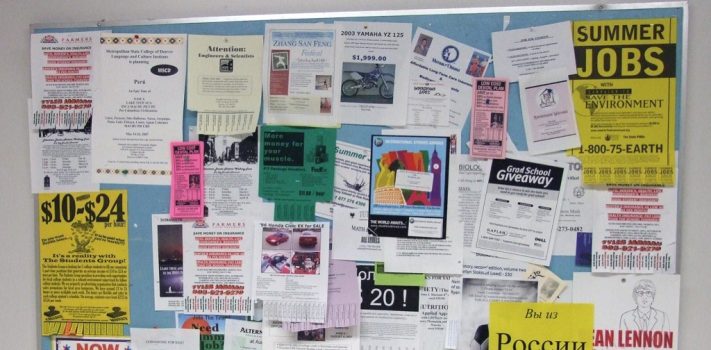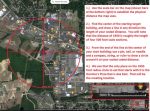(Continued from Part 1.)
Option 4: The live drop:
A person-to-person message drop can be performed as well, but it has the highest level of risk for someone to intercept or notice.
You have probably seen a live drop in movies where a briefcase changes hands in a crowded terminal or something, very observable for those paying attention and not overly discrete. It is absolutely critical that, if it can be avoided, the two individuals performing a live drop have no discernable connection with each other or readily identifiable groups! If known club member A passes by known club member B and has any kind of interaction, people in the know will put that together. However, if club member A has his grandma’s neighbor do the interaction, it may not be recognized quite as readily.
As I mentioned for the briefcase transfer, some drops need to be larger in size. The live drop is a certain way to guarantee that the target package has receipt by the target recipient – but it puts all the parties “at the scene”. Disguise is paramount…you may have to go to great lengths (like ‘borrow’ an Amazon van for the day) to pull off a large drop. [See further down in Caches for large item drops.] Suffice to say, make the item as common-place as possible to avoid detection of the transfer.
One idea for live drops is to plan ahead. For example, if the forecast is rain for the next three days, then arrange your drop outside. The target sits on a bench getting soaked. Informant walks by with an extra umbrella and graciously gives the umbrella to the soaked person. The drop is in the umbrella handle, the target then opens the umbrella, and gets up after a determined time after the informant leaves. It would be wise to come up with a handoff phrase that someone could not guess to ensure the correct target (if not known).
An example would be:
Informant: “You look a little wet!”
Target: “I’m alright, at least I’m drier than San Francisco” (SF reference says “I’m your person”)
Informant: “Here, I have an extra umbrella, stay dry and have a great day”
Another KGB-inspired method is to mark a cigarette with information that could be viewed immediately and then smoked to erase the info. The person walks by the informant and, using a codeword or phrase, asks to bum a smoke. They thank the informant as a normal person would, walk on and while lighting it, quickly views the important information (must be very short for the instantaneous review) and lights the whole end of the cigarette so as to burn away the information. This works great because you have to bring a smoke closer to your face to use it, so this is a natural motion. It also works at night because you have a flame to illuminate the message. If compromised, the informant could burn it prematurely – so it should be readily accessible for this reason. A single thick paintbrush bristle or toothpick tip works well to deposit letters/numbers in this manner. It has to be reasonably legible but not stand out like a billboard.
Option 5: The Cache:
Another way to transfer larger drops is by a cache. A cache is a concealed deposit of an item(s) of varying size, in a location that others would not readily find despite looking for it. A cache can be accessed one time, or multiple times by you or others. Here, I will discuss some rules of a successful cache:
1.) Location, location, location…Do not put a cache where people will be travelling all the time, unless your camouflage is impeccable, and you have an opportunity to place it “with purpose” (i.e construction worker). Remember: Securely planting and retrieving a drop get exponentially harder, the larger the drop becomes.
2.) Waterproof EVERYTHING. No matter how tight you seal it or how well you pack it, if it is left for long periods of time, hen it needs to be protected from moisture.
3.) Even if your location and camouflage is perfect, if the recipient cannot access the cache without suspicion it is not ideal. The only situation where this would be okay would be where the cache could be accessed quickly and never used again, or if a significant distraction is present (think firetruck coming through the coffee shop window, giving you enough time to quickly grab a bag stashed under the slushy machine). Even with a sufficient distraction, it is not guaranteed that nobody will witness accessing a cache.
4.) Camouflage is not optional…your cache should blend in like it was never there – or has always been there.
5.) Account for daylight/nighttime visibility differences. You do not want to hide a cache at night and then in the morning find out it looks like a group of woodchucks had an MMA battle. This is a critical detail for night operations.
a. Bring a thick bedsheet for dirt if digging, it is quieter than a tarp and nearly as durable. Pillowcases work for small amounts too and can fit in backpacks.
b. Bring a small hand rake to “rake out the grass” gently in turf areas after placement.
c. If possible, take a daytime picture you can reference while placing at night.
d. Work methodically in areas close to other people. Yes you want to place it and go, but nothing gives away a secret like a passerby hearing a shovel dig up a couple rocks at 1 AM.
6.) Use existing things that never get accessed. My favorite thing for an urban cache is an air conditioner. They are usually too heavy to try and move, too bulky to get away with it, and usually have ample room (even when operating) to hide larger items. Rooftop units are great because of the lack of foot traffic… add some tools and a uniform and you’re golden.
7.) By using maps and coded location, you can arrange a meeting, or indicate the location of a cache by way of map. This can be done for smaller items as well and is a useful technique for confusing average people from a location (remember that all but the vey best high-level encryption is crackable).
One very simple and effective tactic to transmit cache coordinates or arrange a meeting place without actually saying the coordinates, is to give an entirely unrelated location with a “x” feet or miles offset. Obviously, a small number would be miles, and a large number would be feet. Feet is most accurate and obviously works best in city terrain. Let’s say you live in Wilson NC, and we use the example “LH+1950-DEat”.
LH = Lowes Home improvement
1950 = distance away from the center of target [NOTE: You can use +/- interchangeably]
DEat = a place to eat that starts with the letter “D”
If you could procure a business card for Lowes building supply in Wilson NC, and write a “1950-DEat” on it, that would also give the coordinates…and most people will look at the “1950-DEat” as scribble. The same technique can be used on a non-satellite map by using the center of intersections or other landmarks. This coding is very simple, so extend to your comfort level of complexity.
This can be scaled up to a statewide application or even across the country, it just needs a way to discern what the sender implies as the target. You can use TR (intrastate) or TE (interstate) at the beginning of the instruction for clarity. This would avoid picking somewhere too local or too far away. Tucson Arizona could also be stated as “Nashville TNTR+1405iT” for example, to indicate the start city, state, intrastate, milage (use a little i), and starting letter of target locale. If multiple places do exist on the same circle, you can use an additional quantifier such as population or a familiar state animal (“Liz” for lizard would not be common in Utah or Montana, but certainly would be in Tucson).
(To be concluded tomorrow, in Part 3.)











